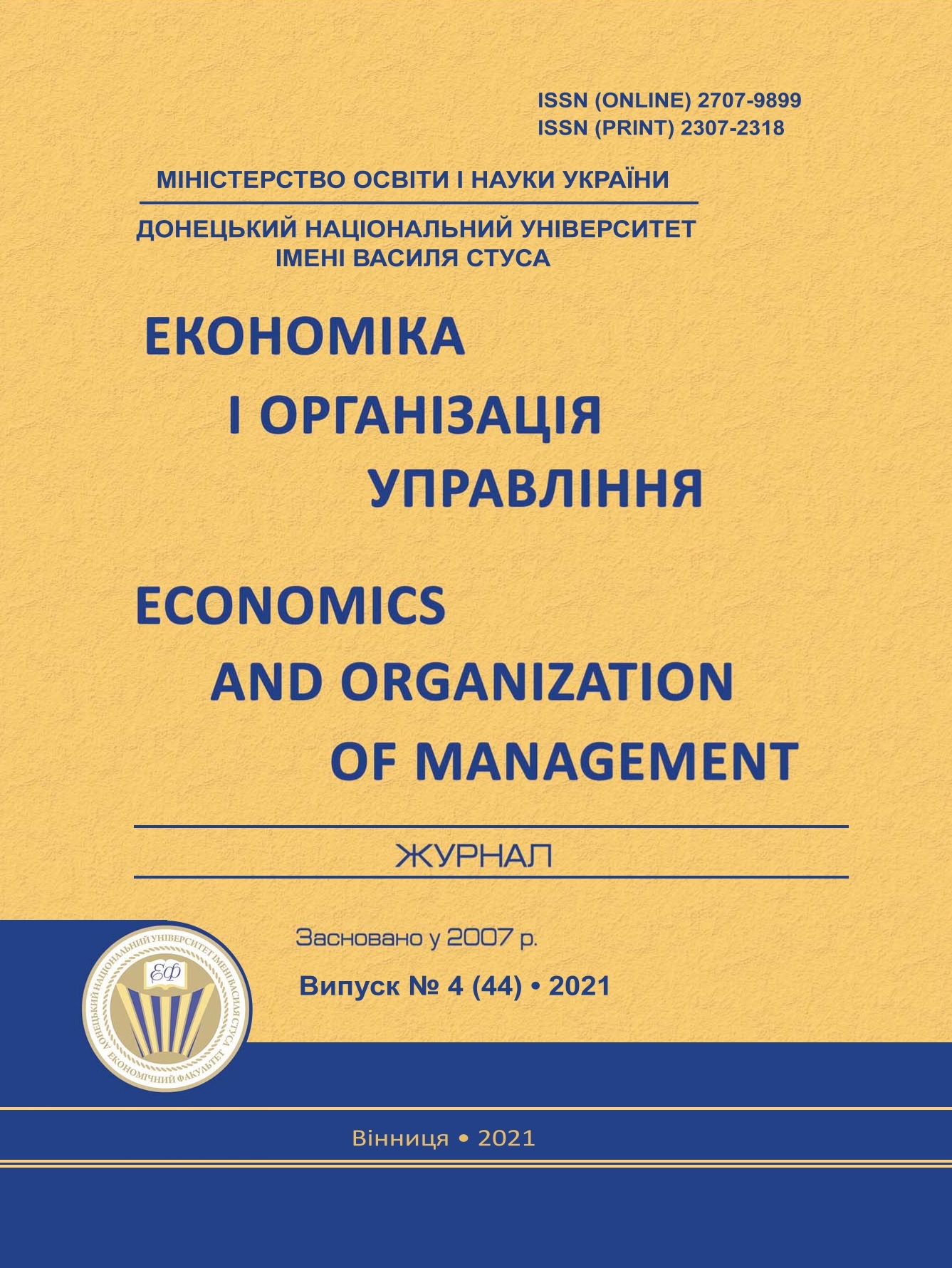Clusterization of the world economy in the conditions of technoglobalism
DOI:
https://doi.org/10.31558/2307-2318.2021.4.13Keywords:
cluster analysis; international rankings; socio-economic development; STATISTICA; indicesAbstract
The article presents a cluster analysis of 100 countries of the world according to international rating indicators of socio-economic development: global innovation index; education index; human development index; global competitiveness index; ease of doing business index. The author highlights the main features of cluster analysis of the world by means of STATISTICA according to the above indicators. The study substantiates the assignment of countries to each of the above clusters due to the averaging of the level and value of each of the indices, which serve as the methodological basis for the study. The first group of countries (follower countries) is characterized by a fairly low level of human development, which leads to a fairly low level of innovation development. The second group of countries (trendsetters) includes countries whose indicators are not the highest, but sufficient to establish common examples to follow or take into account their socio-economic and innovation policies in countries with less developed economic and social life. The third group of countries (donor countries) is characterized by a fairly simplified business environment, low innovation potential. The fourth group of countries (innovators) is characterized by the highest level of innovation development, education index and human development.
References
Чалюк Ю.О., Чалюк Ю.А. (2020). Індекси як критерії оцінки міжнародної соціально-економічної динаміки. URL: https://ir.kneu.edu.ua/handle/2010/33897
Савченко М.В., Витяганець І.М. (2020). Підвищення міжнародної конкурентоспроможності Вінницької області в умовах євроінтеграції. Економічний вісник Донбасу. URL: http://evd.luguniv.edu.ua/index.php/evd/article/view/147
Васильців Т.Г., Левицька О.О. (2020). Методичні підходи до аналізування креативних та інформаційно-знаннєвих чинників у реалізації смарт-спеціалізації в регіонах ЄС. URL: http://re.gov.ua/re202002/re202002_153_VasyltsivTH,LevytskaOO.pdf
About the global innovation index. URL: https://www.globalinnovationindex.org/about-gii#history
UNDEP (2021). Human Development Reports. URL: http://hdr.undp.org/en/content/human-development-index-hdi
The Global Competitiveness Report (2020). URL: http://www3.weforum.org/docs/WEF_TheGlobalCompetitivenessReport2020.pdf
The World Bank (2020). Doing Business. URL: https://www.doingbusiness.org/en/data/doing-business-score
Arregle, J.-L., Beamish, P.W. and Hebert, L. (2009). The regional dimension of MNE’s foreign subsidiary localization, Journal of International Business Studies, 40(1): 86- 107.
Boddewyn, J.J. (1988). Political aspects of MNE theory, Journal of International Business Studies, 19(3): 341-363.
Cuervo-Cazurra, A. and Genc, M. (2008). Transforming disadvantages into advantages: developing-country MNEs in the least developed countries, Journal of International Business Studies, 39(6): 957 – 979.
Iyer, G.R. (1997). Comparative marketing: An interdisciplinary framework for institutional analysis, Journal of International Business Studies, 28: 531-561.
Mauro, P. (1995). Corruption and Growth. Quarterly Journal of Economics, 110(3): 681-712
Peterson, M. and Malhotra, N.K. (1997). Comparative marketing measures of societal quality of life: Substantive dimensions on 186 countries, Journal of Macromarketing, Spring, 25-38.
Безруков Н. С. (2008). Способы региональной кластеризации по параметрам человеческого капитала на основе самообучающихся нейронных сетей. Управление в социально-экономических системах. № 1(15). С. 96–102
Янковой А. Г. (2010). Многомерный анализ в системе STATISTICA. – Одесса : Оптимум, 200. 244 с.

